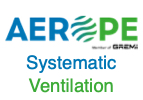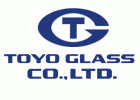A position paper on the future of the Emission Trading Scheme beyond 2030 has just been released by 15 industrial sectors.
The Energy-Intensive Industries (EIIs) support the EU’s climate goals — including climate neutrality by 2050 and a 55% reduction in greenhouse gas (GHG) emissions by 2030. While the EU Emission Trading Scheme (ETS) plays a central role in driving decarbonisation, it must be complemented by essential enabling conditions, such as affordable low-carbon energy, massive infrastructure investments, and supportive market mechanisms. The ETS should also be reviewed to ensure enough liquidity in the market after 2030.
Looking beyond 2030, the current ETS trajectory — which would drive the emissions cap to near-zero by 2040 — is unrealistic and risks undermining industrial competitiveness. Without sufficient access to scalable, cost-effective low-carbon energy sources (like hydrogen, clean electricity, and biogas), and critical infrastructure still largely absent or underdeveloped, a zero-cap approach would either force early industrial shutdowns or derail decarbonisation goals.
To address these challenges, the EIIs urge a pragmatic revision of the ETS post-2030. Key recommendations include:
- Robust carbon leakage protection for all exposed sectors, avoiding punitive correction factors and ensuring fair indirect cost compensation.
- Revised decarbonisation trajectory to reflect the realistic deployment timelines for new technologies and energy infrastructure.
- Technologically achievable benchmarks aligning with sector-specific decarbonisation rates.
- Market Stability Reserve (MSR) reforms, including halting allowance invalidations.
- Comprehensive energy strategy to ensure secure, competitive, and low-carbon industrial energy.
- Streamlined permitting and increased ETS revenue reinvestment into industrial decarbonisation.
- Integration of international credits, emerging carbon-removal and capture technologies into the ETS framework.

























